Potassium sulfate for cucumbers
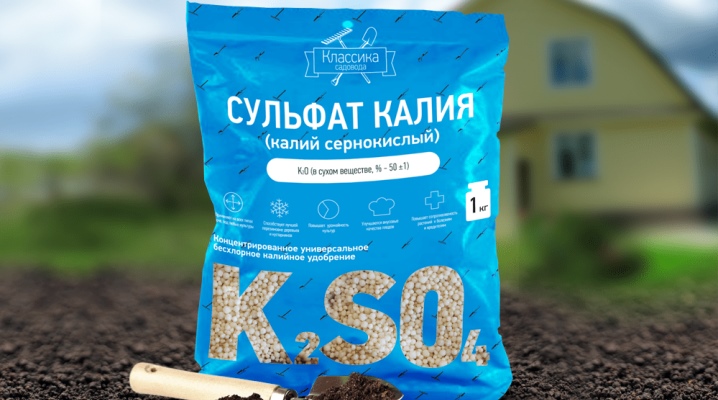
Cucumbers, like many other plants, need additional nutrition to provide them with the necessary nutrients and minerals. One of these dressings is potassium sulfate, which is necessary for plantings growing in a greenhouse and those that are grown in the open field. What it can give to the plant and how to use it correctly, we will tell below.
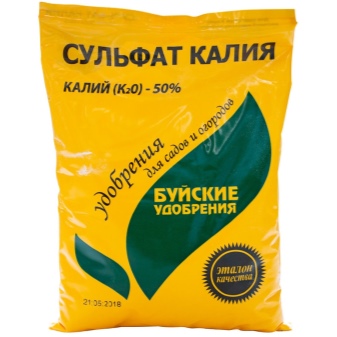
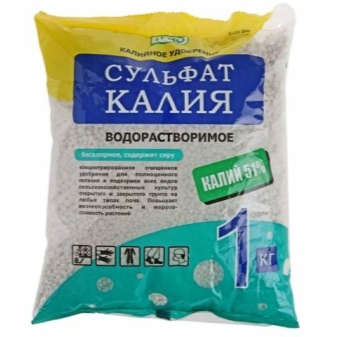
What is it and what does it give?
Potassium sulfate is a complex mineral fertilizer that is used to feed many plants, including cucumbers. The big plus of this fertilizer is that there is no chlorine among its components, which can interfere with the assimilation of many necessary substances and elements. This top dressing contains 50% potassium, oxygen, 18% sulfur oxide, 3% magnesium and 0.4% calcium.

In general, all fertilizers are divided into 2 types: organic and mineral. They can be presented in different ways, both dry and liquid. If we talk about mineral dressings, then these include substances such as potassium nitrate, potassium humate, potassium chloride and others. You can use such dressings, but you must strictly follow the instructions.
For vegetable crops, it would still be better to use organic substances with potassium content: wood ash, manure, chicken droppings and the like.

Potassium is an essential element for all plants. Fertilizing with fertilizer with its content contributes to an increase in soil fertility, helps to strengthen the immune system of plantings, which makes them more resistant to various diseases and attacks of pests. Potassium also improves the taste and metabolism of cucumbers, allowing them to better absorb the minerals they need. In addition, it accelerates photosynthesis and the growth of the root system, and when used during winter or late autumn, it triggers the work of protective processes, which allows plantings to tolerate even severe frosts normally.
With a deficiency of potassium, the plant begins active growth of foliage and lashes without ovaries. Its leaves change color, becoming darker, and a yellow border is formed on them, and the fruits take on the shape of a pear.

Excess potassium is also bad. It can cause root burns, leaf edge necrosis, and reduce the supply of many nutrients, which will not in the best way affect the health of your plants.
How to dilute?
When diluting fertilizers, both mineral and organic, it is important to observe the proportions and dosage. Otherwise, there is a risk of harming the plant.
To dilute mineral fertilizers, you need 2-3 tbsp. l. (20-30 g) pellets and 10 liters of water. All this must be mixed well, after which the resulting solution can be used for root feeding, watering the plant strictly at the root.
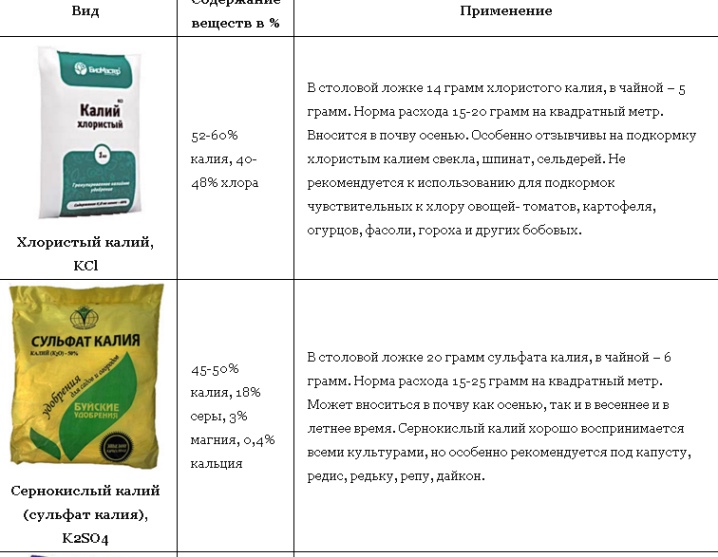
To spray with the same fertilizer, you will need to lower the saturation of the solution. To do this, you need to use a smaller amount of granules - 1.5-2 cups.
As for organic fertilizing, then the recipe here depends on what kind of fertilizer you plan to use.
So, if you are using fresh manure, then you need a kilogram of this component per 10 liters of liquid. All this must be thoroughly mixed and wait 3-4 days to let the solution brew. Moreover, it needs to be stirred every day. After a few days, the solution should be diluted with 4 liters of water, after which it can be used.
If you plan to make a fertilizer based on poultry manure, then you need to dilute this component with water in a ratio of 1 to 1. After that, the solution should be infused, which will take several hours. Before using the resulting mixture, it must be diluted with water in a ratio of 1 to 10.
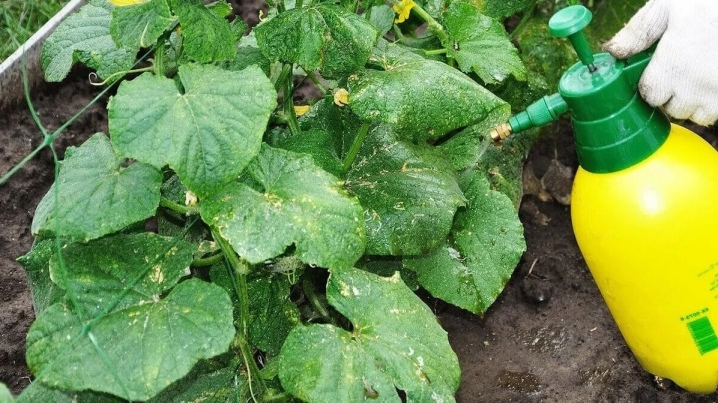
The easiest solution will be wood ash. To do this, you only need a tablespoon of this component and 10 liters of liquid. Having stirred all this, you can start feeding the plantings. The solution can be either sprayed on plants or watered.
A green fertilizer is also suitable as an organic potassium supplement. It is prepared from succulent cut grass. It must be placed in a black polyethylene bag and closed tightly. The package should be placed in a place that is well lit by the sun and left there for 2 days. After this time, half of the bucket should be filled with this grass, and the remaining space should be filled with water. The resulting mixture needs to be infused for 2 hours, after which it can be applied. For each cucumber bush, 1.5 liters of solution must be applied.

Application
There are two ways to feed the plants: root and foliar. At the same time, root feeding is the main one, and foliar feeding is additional, but it should not be neglected. It is especially important to combine these two methods during the fruiting period of the plant in order to strengthen it.
Please note that plant feeding should be done after good watering in the evening. Before use, the solution must be heated to +20 degrees.

Root dressing
The main advantage of such feeding is that the substances necessary for the plant quickly reach the roots. If you use dry fertilizers, then they must be placed on the planting site and dug up along with the ground. Liquid fertilizers need to be irrigated between rows.
At the same time, it is not recommended to overdo it with a dose of fertilizer: there will be no benefit from this.
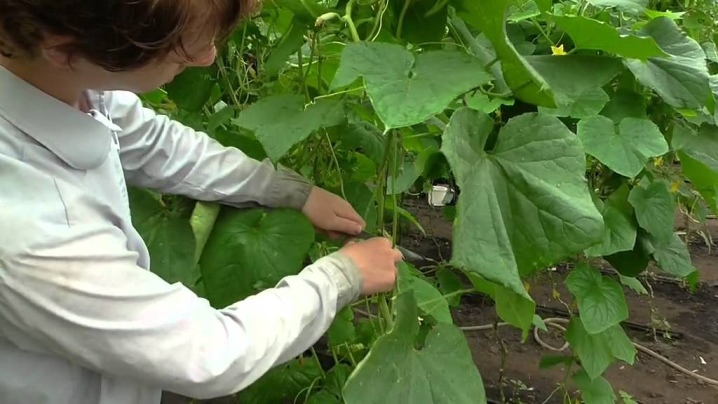
Foliar dressing
This top dressing involves spraying plants with useful solutions. It is best to use them in a cool time, when the sun is not beating down, so as not to cause a burn at the planting.
Such dressings will help get rid of the early yellowness of the foliage, contribute to the acceleration of photosynthesis and increase the growing season of the plant.
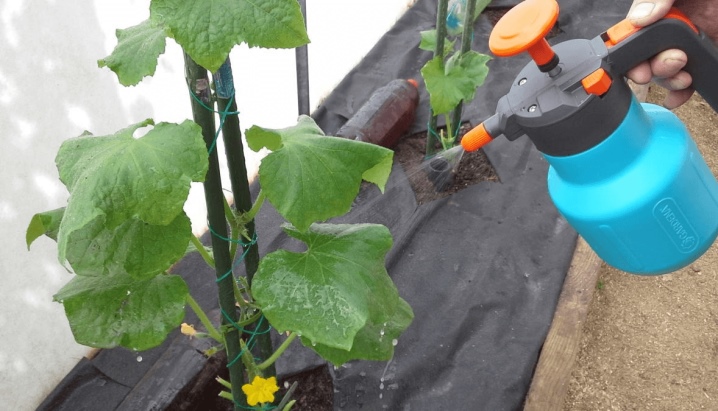













The comment was sent successfully.